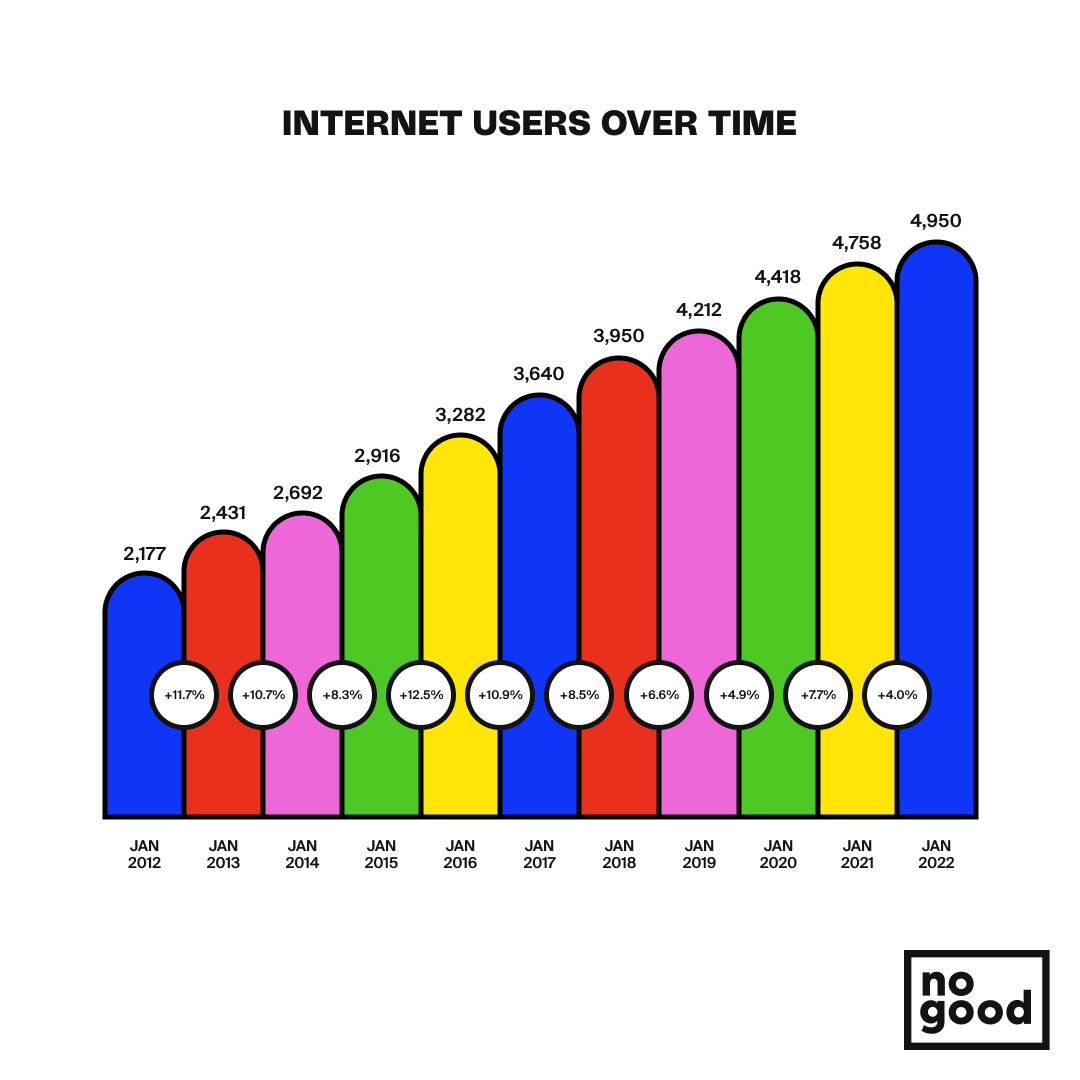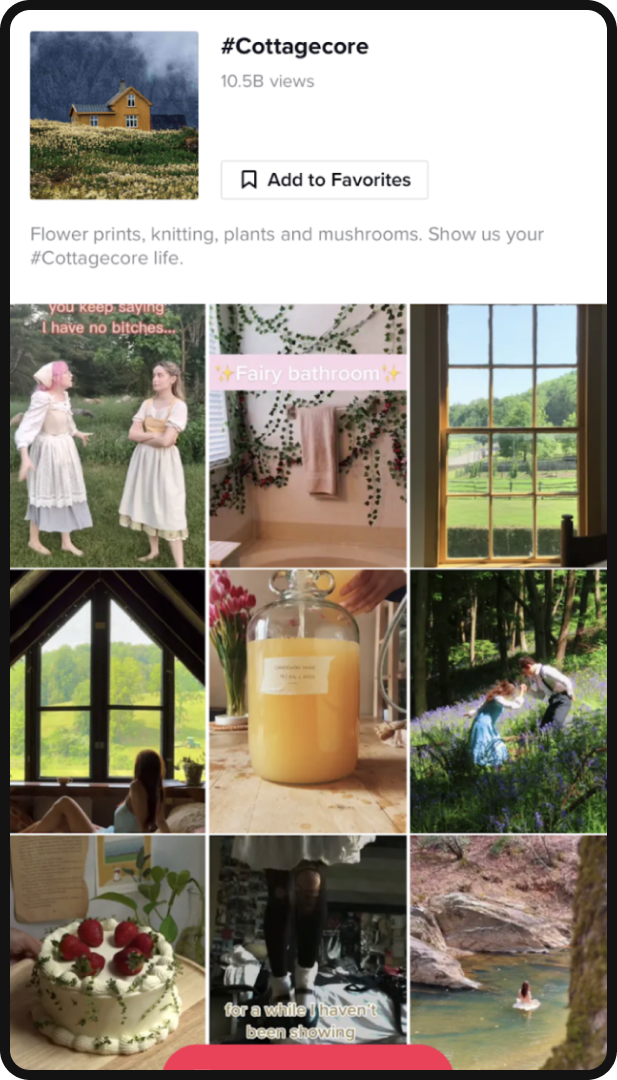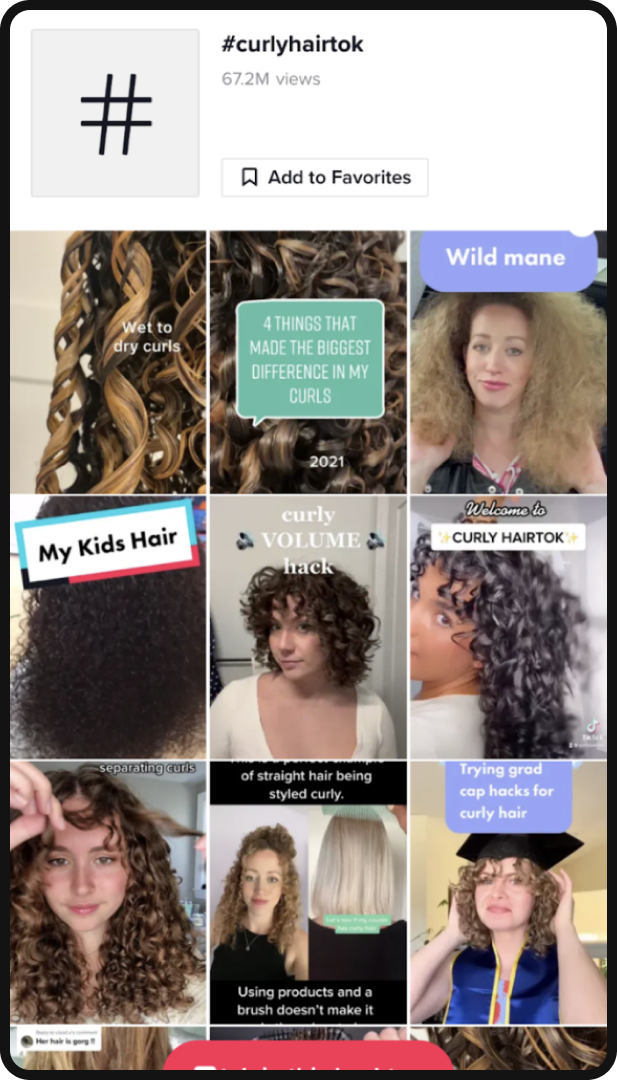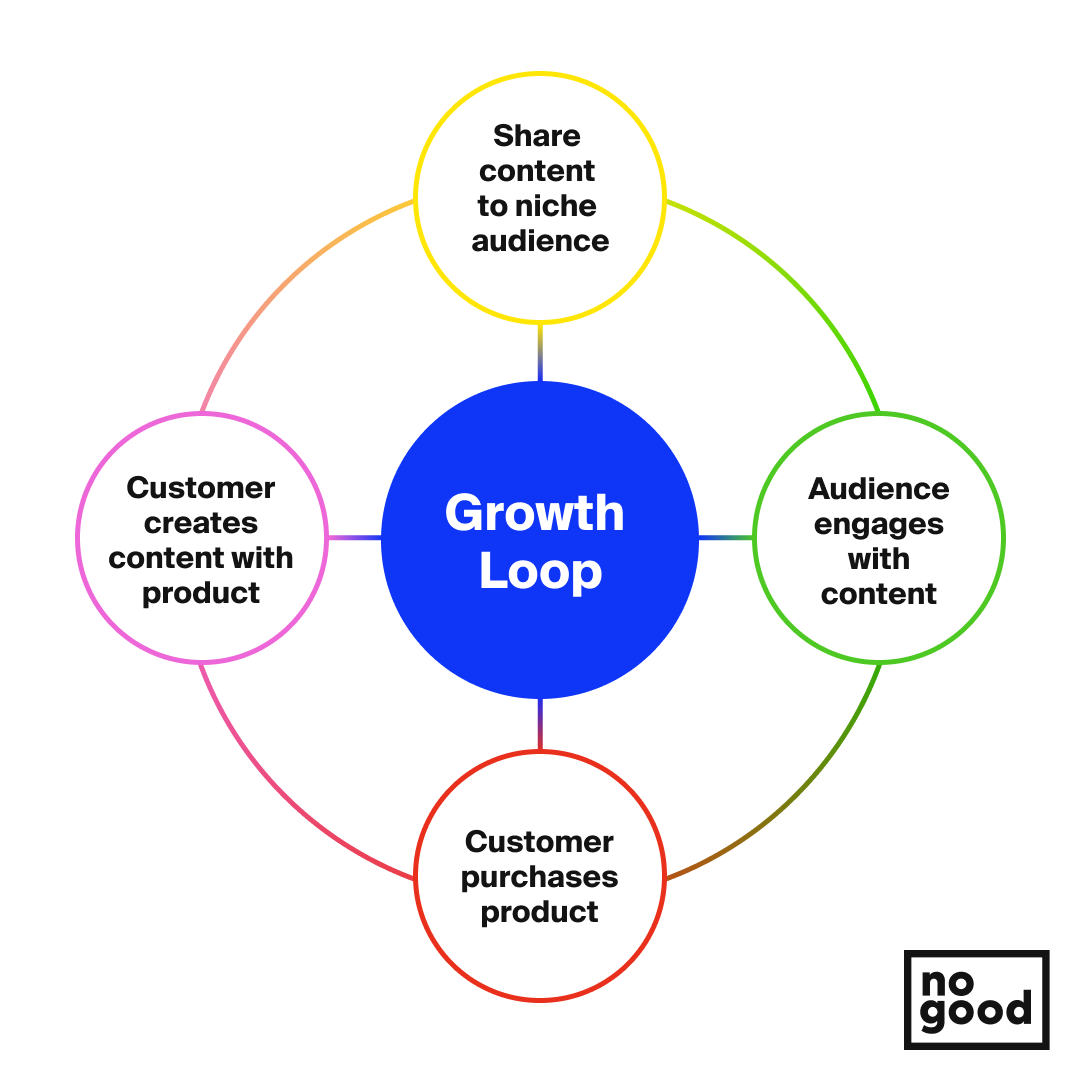As the growth of social media platforms skyrockets (with 424 million new users joining social networks in 2021 alone), more and more people are searching for a sense of belonging and inclusion in the digital world. This need for connection (and the advancement of algorithms) has developed into a boom in niche communities.

Let’s take a deep dive into what niche communities are, how to use them, and what value they bring to brands.
- What is a niche community
- Niche communities in action
- How to build a niche community
- Tips to successfully build a niche community
What is a niche community?
A niche community is a group of people that share a common interest, value, or goal. While the internet is broad, to say the least, people are naturally finding their own digital niche communities to relate to and share a sense of belonging. Think of digital niche communities like your book clubs, Saturday pick-up game teams, or running groups. In these communities, you gather to talk and engage around whatever that specific interest is.
Brands and marketers have traditionally defined niches in broad and superficial terms like beauty, fitness, or fashion. However, these do not adequately represent the communities they are marketing to. An example of niche communities in these areas would be ethically made skincare, Crossfit exercises, or Japanese street fashion. If a brand can become affiliated with a niche community, or even better create a niche community, they will find themselves redefining what it is to have “raving fans”.
Niche Communities in Action:
Social platforms like TikTok have given micro-communities (hello booktok, cottagecore, curlyhairtok) a breeding ground and are now showing brands the importance of creating community. Think about when someone says “Oh you know that TikTok…” and another person has no idea what they are talking about — even though that TikTok trend is running rampant on the first person’s ‘for you’ page, the latter person is not in the same niche community as them so they are not being influenced by trends within that niche. Even within the same app, these two people are having very different experiences.



At the head of these niche communities are micro-influencers. These influencers have built platforms around a specific niche and now have communities with allegiance to them because they share that common interest. Micro-influencers are extremely effective, with 82% of consumers being “highly likely” to follow a recommendation made by a micro-influencer, compared to 73% who are highly likely to act on a recommendation from an average person. Instead of yelling to the masses, these micro-influencers are able to whisper straight into their audience’s ear. Rather than a large promotion with a celebrity that reaches many and converts little, brands can run campaigns with several of these micro-influencers who can authentically endorse their product to a niche audience, and drive more conversions. Smaller audiences offer higher conversion value, while the larger the audience gets the lower the conversion value becomes.
Additionally, these niche communities provide opportunities for brand advocacy and social validation. The members of these communities also create content about the brand and promote the product organically, further building that relationship and continuing the cycle (see the growth loop below) contributing to not only higher conversion rates, but higher retention and referral rates as well.
How to Build a Niche Community:
We’ve gone over what a niche community is and what they look like in the wild. Now, let’s talk through how to build your own.

Ideally, you would build your community organically and over time. Rarely do these communities grow fast in the early stages of business, but the steps below will guide you to creating a solid foundation for a loyal community.
Identify Your Weirdo:
Everyone is weird (or unique), and as a brand, you have to identify what kind of weirdo your audience is. Get as specific as possible. The description should be so specific it’s almost alarming.
For example, the archetype for your brand might be a zillennial in the first year of their career, with no established savings account, who wears bucket hats and new balances, is a member of a local pilates studio, and rents an apartment in a luxury complex in Austin, TX. Yes, be that specific.
These descriptions are crafted from social listening, audience metrics, and data collected based on your audience engagement. Who is interacting with your content? What content are they interacting with? Is there a pattern in age, style, behaviors, etc? You can also do a competitor analysis to identify a competitor’s weirdo and see what your audience has in common and how they differ. This should be an evolving description that is adjusted and tweaked as new data is collected.
Identify Your Platforms:
Where are you going to create your niche community?
This will depend on where your audience spends their time and what platform is the most native to your brand. TikTok is a great example of a platform that brands are using to build their niche communities since its algorithm is conducive to matching users with niche interests.
To identify your platforms, first, take a look at your audience age metrics.
Various platforms differ in audience based heavily on age groups. For example, Facebook’s largest age group is 25-34. TikTok’s largest age group is 10-19. This will give you a broad understanding of where your audience may spend their time. From there, identify what platforms are an organic fit for your brand. As a brand, misusing a platform is worse than not being on it at all. Remember, you don’t have to be everywhere!
Develop Your Messaging:
It is important to speak the language of your audience. The slang, jokes, and phrases you use are all dictated by the culture of your target audience. This should be an ever-changing strategy as you measure what your audience reacts to. Just as cultures shift, your messaging should shift with it.
With that said, be careful that you are ebbing and flowing with the interests of your audience, not using performative marketing tactics that end up alienating them. Jumping onto bandwagons for the sake of a post has the opposite effect and ends up chasing away customers when you’re trying to earn their trust.
Consistently Show Up:
Whatever platform you are using, a consistent presence with fresh content is non-negotiable to grow your audience. Identify and maintain an effective posting and interaction schedule that allows you to share with your audience often and engage with them on a regular basis. It is a two-way conversation, not a billboard for people to pass.
Cross-Promote Your Community:
Be sure to share your community on your other platforms, website, product packaging, etc. Encourage your current audience to join you there and help you build that community. Creating a unified goal and getting people invested in your cause builds fast and deep loyalty.
Tips to Successfully Build a Niche Community:
Now you’re ready to build your own niche community! As you’re building, use some of the tips below to maximize your efforts.
Utilize Micro-influencers:
Micro-influencers are a brand’s best shot at communicating directly to their target audiences. By partnering with multiple micro-influencers in the brand’s desired niche communities, they can create an affiliation with their product. Members of any community most likely follow several content creators also in the space. If all of their favorite creators are using the same product, it then becomes a cultural standard.
Start by identifying five micro-influencers to partner with. Create a campaign brief for the influencers, run the campaign, and then analyze the results from each. Use those learnings to drive the next campaign and choose the next influencers you work with (or continue to work with!) The assets from these campaigns can also be used in your paid advertising strategy, running ads through the influencers’ accounts or the brand’s own channels.
This process is important for establishing strong relationships with the creators within these communities as they will act as a liaison between the brand and the community — potentially with multiple collaborations as the brand and community evolve.
Cater Your Websites and Apps to the Individual:
Tailoring your brand to a niche audience can go beyond a brand’s social media platforms as well. With the rise of algorithms, we are now seeing brands tailor their customer’s experiences on their website based on their preferences. Data and relevant tagging allow them to modify what the customer sees based on their own choices and information the platform has gathered. This is evident in online shopping, streaming services, and Digital media. Think of Netflix and its custom homepages that are curated from the users’ behaviors and preferences. Netflix uses this to cater to each customer’s experience.
Test Messaging on Your Social Platforms:
Within these micro-cultures are various terms, language styles, phrases, and inside jokes. In order to build these communities and gain the trust of the members, brands must speak their language and communicate in a way that resonates with them. Testing various messaging, with both context and delivery, will help brands establish how to best communicate with their online communities. An example of this is presenting a certain topic in two different ways. If a brand is making a post on the five best summer products, they can create a copy-heavy content piece listing out the products, and then another post showing a flat lay of the products. Using this A/B testing format, you can identify what your audience responds to best. This can also be done by testing serious tone messaging vs. humor, casual language vs. formal, etc.
Important to note that, as with any testing, you maintain a constant as you test. If you’re testing tone of voice, the time of day you’re posting should be consistent as well as the type of imagery. This will allow you to look at the results and know, with near certainty, that your test was directly responsible for any difference in results.
Utilize User-Generated Content:
Niche communities are built on conversations from everyone, not just you. As members of your community create content, sharing their content and engaging with their content will create feelings of authenticity, belonging, and loyalty. Additionally, this is a great tool to use for organic growth and paid advertising.
UGC content can be obtained from micro-influencers, UGC/content creators, or your consumers. Keep in mind, all influencers are content creators but not all content creators are influencers. Content creators may or may not have an audience (like micro-influencers), but the important thing is that they can create quality content.
There are two ways to utilize UGC content.
- Find content already being posted that your brand is tagged in and ask the creator to post it on your account. This is a great way to engage with your community, build loyalty among your audience, and take advantage of assets organically being created by your customers.
- Hire UGC creators or micro-influencers to create content for you to post on your channels. If you don’t have an in-house creator, this is a great way to consistently have content without a huge budget for influencer marketing. Ideally, you will find creators that you can build a relationship with and create a monthly partnership to receive content on a regular basis.
Spend Time Listening in the Communities:
The best way to learn about your niche communities is to spend time in them. See what they are seeing, and listen to what they are saying. Just like entering a new job and learning the work culture, you are entering a new friend group and learning what their culture is. Taking time to listen will make the process of building your own community faster and easier.
Ways to do this…
- Use a social listening software like Hubspot or Sprout
- Set up Google alerts for your niche topics
- Create an RSS feed to stay updated on your topic
- Set a time every day to search through your social platforms and see what your audience is saying!
The Value of Niche Communities
In an age where humans are more distant than ever, digital niche communities are rising to meet the need for belonging and inclusion. Social media platforms that were once broad and disconnected are now moving to be hubs for groups of people around a similar interest. These pockets on the internet of people engaging and communicating are where brands should look for audience growth. No longer are we concerned about simple age and location demographics. Niche communities turn customers from numbers to faces, metrics to members.
Here is a quick recap:
- Niche communities are groups of people that share a common interest, value, or goal.
- Social platforms’ data-specific algorithms are turning into a breeding ground for micro-communities.
- To build your own niche community, you need to identify your audience and refine the messaging that resonates with them.
- A few tips for success are utilizing micro-influencers, testing your messaging, catering your digital experiences for your audience, utilizing user-generated content, and listening to your audience.





